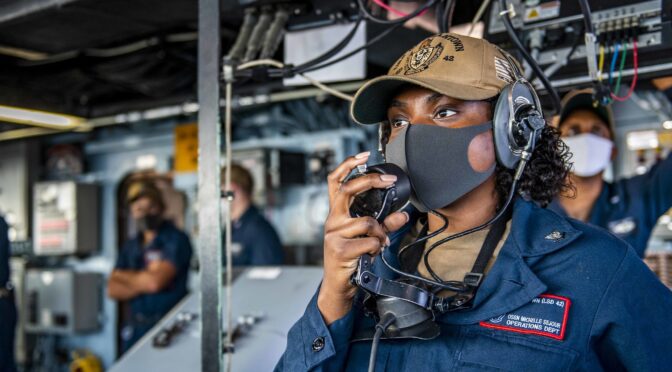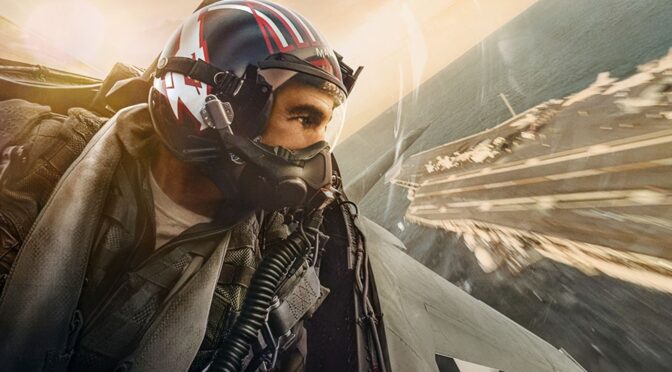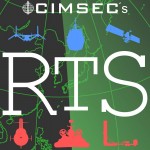By Captain John P. Cordle (ret.)
Author’s note: The following story is a notional description of a discussion that must have occurred, because there is a detailed regulation covering a woman’s right to choose….the color of her fingernail polish. Since senior leaders spent so much time, research, and detailed factual analysis on the topic, dedicating an entire paragraph in Navy Regulations to the issue, it must be critical to warfighting readiness.
The year is 1993. After years of skirting the issue, the Navy is just putting the finishing touches on a new policy to allow women to fly in combat aircraft. Just before he was ready to sign, the Admiral realized that something significant was missing and he called his staff together for an urgent meeting. “Gentlemen – oh, and Barb,” he huffed, out of breath with excitement, “Where is the paragraph on women’s nail polish color policy?”
The men paled in anguish, aghast that this key fighting element had been overlooked and left out of the policy. Ashamed and embarrassed, they immediately convened an emergency war council meeting to discuss the issue and come up with a policy. Barbara (call sign “Barb,” a veiled reference to the way she corrected her male counterparts when they made comments that were trending toward inappropriate) was the only woman in the room–aside from the recorder, currently the Admin Officer but an aspiring fighter pilot herself–which would allow the official record to state that “female input was considered” in the decision (silent on what it was…). Barb looked down at her red nails, her favorite color, and started to protest: “Why do we need…?”
“Well,” one of the men interrupted her, holding up his hand in a shushing motion. “You can’t be flying a plane with just any color of nail polish.”
“Obviously,” said another.
Harrumphs of approval filled the room. “So let’s make a list. What colors are there?”
“Huh?” said Barb. “Why do we need a policy in the first place? What difference does it make to you men what color my nails are?”
One of the men, a decorated Captain and fighter pilot, responded immediately on behalf of the group: “Hello – It’s distracting!”
More harrumphs. Now Barb was confused. “So what colors are distracting to you guys?”
“RED!” Three men shouted in unison, staring and pointing at Barb’s hands, to her horror. But the men didn’t seem to notice her discomfort – they were on a roll. “Forbidden!” the Captain said to the recorder, a young female Lieutenant, hiding her light blue Tiffany nails as she took notes.
“Huh?” said Barb. “Why do we need…?
“But the men were just getting started. “Blue! Black! White! Green!” There was a long silence, then – “PURPLE! Forbidden!” The recorder kept writing, her face blank but increasingly flushed.
“But we’ll be wearing gloves,” said Barb. “You can’t even see what color our nails are!”
The looks were cutting and in unison: “But we’ll KNOW- and be distracted!”
Barb continued, thinking about how one-sided this conversation was. She tried to relate on a personal level. “So if I want to choose a nice nail color for the weekend, I have to remove it or paint it over to come to work on Monday? Would you apply that rule to your wives and daughters?”
This earned Barb a quizzical look from the men; “duh – of course!” said one. “This is about warfighting and STANDARDS!” said one of the male commanders.
“Somehow this doesn’t seem fair,” said Barb, “since men aren’t impacted by this subject at all. It reminds me of the women’s hairstyle rules that caused a lot of women anguish due to premature hair loss” – she wondered if any of her male counterparts even knew what traction alopecia is. But again she was interrupted.
“Well, that’s not entirely true,” said one of the men, after all, “we often have to pay for it!” This elicited vigorous nods and a round of “hell yeahs” from the group.
Now came the moment of truth. Although it seemed like a foregone conclusion, and despite this being a military group, they were supposed to enforce a form of democracy: a vote. After all, nothing less was at stake as their ability to defeat a peer competitor in battle. The vote was settled quickly (6-3), with only the two minority officers (one Black and one Hispanic) siding with Barb. They shared that “sometimes you need empathy from the unaffected” but that did not resonate with the others; with that, a woman’s right to choose her own nail polish was eliminated.
Barbara was upset but decided to bite her tongue. She thought about other restrictive policies that had impacted her physical and mental health, like hairstyle requirements that caused headaches and hair loss, or shaving policies that negatively impact many Black male Sailors. What if MEN routinely used nail Polish? What if white men had PFB? Would that change the outcome? Of course it would, she thought to herself. She thought about lodging one final protest but remembered what one of her minority friends had shared: “Sometimes when you are being discriminated against,” she thought, “it’s not in your best interest to point that out…”
Barbara sighed and took the document in to the Admiral for signature. He lifted his pen and stopped. “Your nails – how did you pick that awful color? It’s very distracting- I can’t remember where to sign.”
“It’s the only one left that’s allowed,” she replied. “For what it’s worth, your wife recommended it.”
“Well,” said the Admiral, “that color has to go on the forbidden list, or there goes our war fighting readiness, right down the toilet,” he sighed, adding one more color to the list, and then placing his signature at the bottom of the page.
The final wording looked like this:
Nail polish may be worn, but colors shall be conservative and inconspicuous. White, black, red, yellow, orange, green, purple, grey, glitter, striped, or any sort of pattern/decorative nail polish is not authorized. French and American manicures (white and off- white tips with neutral base color only) are authorized.
“My work is done,” he said with a satisfied grin.
Barb wondered about what “conservative and inconspicuous” meant to him, and if it meant the same to her. Why is red not distracting on fire extinguishers and flight deck jerseys, but as egregious as my nails? Could the problem be with the men in the room?
The group adjourned, and the Captain who led them was deeply satisfied that this policy would save lives in battle and increase the air-to-air kill ratio at least twofold for the next generation. No longer will nail polish distract our fighting forces. This will be a great FITREP bullet! The Admiral’s grin spread to the crowd, as they reveled in their good deed.
Barb was grinning too as she left the office, thinking about her bright red toenails – deep inside her combat boots.
Author’s note #2: At this point, we will use visualization to transport ourselves into the future, with a reasonable solution to this issue:
“Greetings,” the Admiral said to the group of 12 women of various ranks in specialties from throughout the Navy. “Today, July 1st 2023, it is my pleasure to convene the first ever Women’s Uniform Board, with full decision authority over the regulations and designs that govern women’s uniform and grooming standards.” She glanced down at her bright red nails and smiled at the board members. “By the way, in this room, you can call me, ‘Barb!’”
Dr. Cordle retired from the Navy as a Captain in 2013 after 30 years of service. He commanded the USS Oscar Austin (DDG-79) and USS San Jacinto (CG-56), and earned the U.S. Navy League’s Captain John Paul Jones Award for Inspirational Leadership in 2010. He was recognized in 2019 with the Surface Navy Association Literary Award and the U. S. Naval Institute PROCEEDINGS “Author of the Year” Award for his extensive writing on leadership, crew endurance, manpower, and diversity.
Featured Image: EAST CHINA SEA (July 16, 2020) Operations Specialist 3rd Class Michelle Sejour, from Orlando, Fla., coordinates messages from the combat information center while standing watch as a phone talker on the bridge of the amphibious dock landing ship USS Germantown (LSD 42). (U.S. Navy photo by Mass Communication Specialist 2nd Class Taylor DiMartino)





